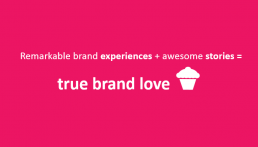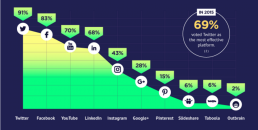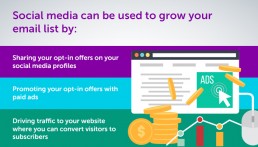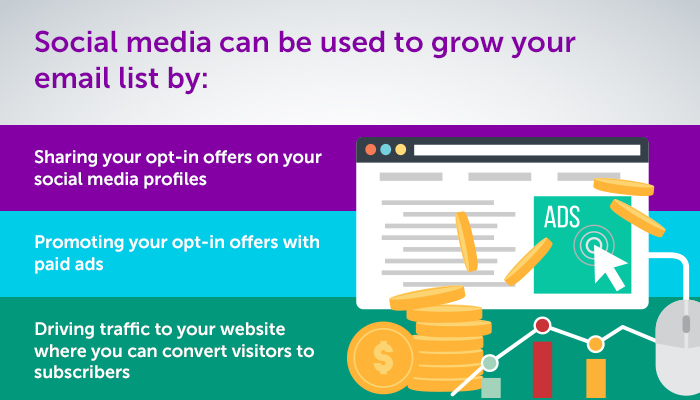Where Do We Leave Our Coat? Where Do We Leave Our Self?
We’ve started a new year. We’ve renewed our resolutions and promises. Then, without realizing, we’ve started running the rat race again, soon embracing our very old patterns. It is a new year again and this is enough to make it seem that all things need to be solved at once. It is morning again, so we leave home on autopilot mode, while our mind rides in circles about all the things we have to do. While forgetting about ourselves. We get our share of the traffic jam. We finally get to the office and put on the business face.
We hang our Self at the office door as if it were a coat.
Where did you leave your ‘coat’ today? Which corner of the office? Or maybe in the car...or maybe at home where maybe, just maybe, it is safe and warm. Wherever it is, are you aware of it?
I used to stop during the day and asked myself ‘where am I’. Most of the times I could not answer. In time, by becoming more aware, I started to actually see myself: when I was present and true to myself, when I was not, when I used my gifts and talents for fulfilling purposes, when I did not. Some days, I still hung my coat along with my soul at the door, as I entered, but I kept asking the same question and day after day, as the question grew inside, I became increasingly aware. This made room for new experiences that fit me and helped me let go of the ones that didn’t. I made some life cleaning and let myself be who I am.
The most important thing I’ve realized is that it is still us out there, as well as in here. We need to be who we are, wherever we go and whatever we do. We need to stay true to ourselves and act according to our real Self. This is the only way we can bring real value and presence to our lives and the others’.
I wish that for all of us this year will be more about presence and awareness, about the wonders of our lives, the music, the poetry, the thrill, the surprise. More about family, friends, and love. More about the wonderful projects that make us the heroes of our own worlds and that ultimately make the entire world brighter. May we have the energy, the self-awareness, and inner drive to make every one of them happen while keeping our true self with us.
Education Rewrites the Story - Changing the World Together
Through education, children transform their inner world – they grow, gain new understanding and values, and become tomorrow’s independent and inspiring adults. By getting involved in the educational process, the teacher is transformed as well, while guiding and inspiring children to grow further. The class universe is rewritten. The school universe is rewritten. The community becomes full of color.
Education Rewrites the Story

On November 2nd we celebrated the way the reality around us is reshaped through education, starting with every child and involving every teacher and every school principal, who have joined their mission with Teach for Romania’s mission. The „Education Rewrites the Story” conference was held under the High Patronage of the Romanian Presidency and reunited 400 participants who listened to the impressive stories of children, teachers, authorities and private companies that support the organization.
We joined Teach for Romania’s mission as we share the same values and commitment to making the world a brighter and better place. This is why we put our energy and creativity into their service to come up with the event concept and name that guided the entire conference: One person can change the world. What about together? We also designed all event materials to reflect this approach and to enforce the event’s umbrella name.
Take a look at some of the pictures here and check our Facebook page for more.
How Can Technology Become More Attractive?
A Practical Approach to Marketing & Communication, Designed for IT&C Companies
We live in a very crowded world, both as companies and individuals. We need to keep the pace with our fast-moving life and fast-moving markets while staying present and connected to ourselves and others. When employed correctly, technology has the huge opportunity and privilege to make people’s lives simpler, easier and more effective.
But in an increasingly crowded IT&C market how can you, as an SME, stand out among many agile and innovative players, looking to occupy their own spot in the customers' minds?
How Can You Differentiate? What Can Marketing Do to Make Your Technology Products Really Matter?
We all know the theory: know your customers, focus on one niche, design a scalable product, provide top services and user experience, and so on. Yes, we know it. And then real life steps in and we get stuck in the hamster wheel of doing sales, follow-ups, delivery, development, and all kinds of fixing. With all these, companies don't have enough time to show and prove their experience.
Software companies can differentiate by creating consistent and relevant content that proves they understand their customers’ challenges and pain points and they are the only ones who know how to solve them.
This requires dedicated time and resources for creating the kind of content customers find helpful and that ultimately influences their decision to buy: product sheets, dynamic presentations, relevant use cases and case studies, testimonials, e-books, infographics or product videos.

Most companies don’t have the time or internal resources to produce content consistently and regularly and illustrate it attractively, so a big part of their expertise remains unspoken.
So What Can Dedicated Marketing Do to Make Your Company Stand Out?
First, it takes the burden off your resources, which lets your team focus on the core business. Second, it makes a coherent communication and content plan that matches your objectives. Third, it puts this plan to work by generating appropriate and beautifully designed content instruments and distributing them on the right channels. Last, but not least, it monitors progress and optimizes in real-time.
This is what I call intelligent ‘s-marketing’ – the kind of marketing that actively and consciously supports sales with custom actions for every stage of the sales funnel. A dedicated, experienced content marketing team can make all the difference in how you are perceived by the market you want to conquer.
---------------------------------------------------
For more on our dedicated experience in working with IT&C companies visit our Bright portfolio. If you want to learn how we can actively make your own technology attractive drop me a line at cristina@bright-living.net

We'd be happy to help you build your bright story!
Content Marketing Study: What Should We Expect in 2017?
Marketing continues to shift from a ‘one fits all’ unidirectional approach to offering beautiful, relevant content and a unified brand experience across channels. More and more companies are realizing the need to transform and adjust their approach to keep up the competitive pace. This is where content marketing comes to play: for creating and distributing valuable, relevant, and consistent content to attract and retain a clearly-defined audience and, ultimately, to drive profitable customer action.
We analyzed this year’s latest content marketing study on the pain points, challenges and decision-making process of content marketers within UK companies that are aware of the power of relevant, engaging content. They are as valid on our market as well, especially that we are more and more taking our products abroad and erasing physical borders.
Less than 10% of respondents were definitely sure how to implement content marketing
Among all the things on their daily lists, companies simply don’t have the resources or the inside expertise to craft their content strategy, plan and instruments or to put the effort into consistent content creation and distribution. While most companies believe content marketing is effective, only a small percent knows how exactly to implement it.

How is Content Marketing Measured? Where Can We See the Strongest Impact?
Content marketing’s effects are most visible in increased brand awareness, customer engagement, search engine visibility and lead generation. All the other reasons are not at all to neglect, but the results depend on the amount of effort and consistency you put into it.

The Most Effective and Dynamic Distribution Platforms
Not very much surprise here and good news for B2B marketers: YouTube and LinkedIn remain their valuable allies. I would bet more on the creative use of SlideShare as it can offer a good place for sharing useful and more detailed knowledge than in a social post or video.

Budget Percentage Allocated to Content Marketing from the Total Marketing Budget Increases Every Year
While in 2015 a modest 10% up to a more courageous 20% was allocated to content marketing from the total marketing budget, last year the average percent got closer to a quarter of the overall budget. This is more encouraging and shows that companies become increasingly aware of its importance and effects. In fact, 70% of marketers say they will definitely increase their content marketing budgets. I believe that this increase will be dedicated to dynamic, visual content marketing instruments.

Common Challenges that Companies Are Facing
Surprisingly or not, the top 3 challenges are internal and they link to the lack of time or skilled resources to produce content regularly. These can be solved by outsourcing the content creation and distribution to a specialized content marketing company, while companies only need to provide the basic information.

What’s next?
Content marketing works best when it accompanies impeccable service and product delivery and continuous evolution in offering better products, friendlier services, and a great overall customer experience.
---------------------------------------------------------
Drop us a line to help you create your own bright story in content marketing.
Source of the content marketing study 2017: https://www.zazzlemedia.co.uk/the-state-of-content-marketing-survey
5 Ways Good Branding Influences Your Company's Life & Evolution
I’ve always considered that branding is just common sense in action.
Branding is not only the shape we give to things, but the drive we imprint to companies and people. When understood and executed properly, branding can reunite meanings, paths, moments, emotions, fulfilled needs.
Having said this, I believe good branding has the super-power of influencing the entire life and evolution of a company in ways we are sometimes unaware of.
- Good branding builds favourability, trust and ultimately love
How do you feel when you meet a person who is pleasant and kind in any circumstance, has a beautiful appearance, asks open questions and shows genuine interest and empathy? You feel great and important. You would want to have them around. You start to value that person and start telling others about how happy you are to have met her.
The same applies to brands. Good branding reflects the company’s DNA and values and offers a unified customer experience at every online and offline touch-point: through employees, products, services, communication, design or points of sale.
- Good branding makes you memorable
Good branding also reflects in the memorable experiences you offer to your customers. It is reflected in the little things, the ones that are not expensive to do, but make your customers’ lives pleasant in ways they haven’t imagined yet.
Could it be a brunch for your most loyal customers? Or a good welcome coffee when they visit? Or a monthly musical evening experience? Or a hand-written birthday card? Or an additional service or recommendation?
Anything goes as long as it matches your brand’s personality and shows people you care.
- Good branding makes customers loyal
If you view branding as the ‘experience’ and not the ‘appearance’, you will realize that customer loyalty is directly linked to offering great experiences based on your strong brand foundation and values. It’s as simple as that.
Split your customer’s journey into pieces and make sure you deliver at your best at every step of the way. Make customer feedback your best friend as it can offer priceless intelligence along this process.
- Good branding keeps your team together
People perform best when they have a meaning, they feel valued and share the same values with the brand they represent. If you manage to engage your team and gain their support through common meanings, the experience they build together across the customer’s journey will reflect this.
Ask yourself and then ask your people as well: what is relevant to them? In what ways do they dream of making an impact? What are their personal greater goals? Are they in the same spirit with the company's greater goal? What would they need to become more confident and engaged? How can the company support them? Or think of your own key questions that will definitely pay off.
- Good branding turns complete strangers into ambassadors
If you see branding and its implications not as optional, but as key, the things above will become your second nature. You will also soon realize that complete strangers start to consider your offerings, become customers and then your big fans. From being a big fan to telling others about your discoveries is just one step. The very step that turns your customers into brand ambassadors.
To confirm their choice and commitment, make sure you always deliver with honesty, authenticity and fix the things you need to fix with elegance and awareness.
I hope we can inspire you for building your bright brand story. Remember, you're not alone in your journey, as we are here to help.
Make the Most of Your LinkedIn Presence in 6 Easy Steps: A Toolkit for SMEs
LinkedIn is a valuable space for B2B companies and a must-have channel to include in your social media strategy. You can use it for as many purposes, such as getting awareness and visibility, positioning as a professional company based on high-quality content, sharing qualified opinions, to accurate targeting for lead generation.
Here is a basic toolkit for making the most of your LinkedIn presence as a small or medium company.
1. Make a content strategy and calendar that you respect. Measure & fine-tune.
What do you want to communicate? To whom? What are your objectives?
Write these down, break down your content into categories and craft your posts around them. You can then slice your ideas into months and even weeks to plan your posts better and keep a consistent approach.
Keep an eye on how it all works by following your page’s statistics and don’t be afraid to adjust in real-time.
2. Post regularly and make sure you hit the sweet spots
The best days to post content on LinkedIn for higher engagement are when people are in their professional mindset. This is usually between Tuesday and Thursday, either early in the morning, at lunchtime or early evening.

There is an additional good time between 10 am and 11 am on Tuesday when people are in the proactive planning mood and are looking for fresh ideas. You can use Friday’s lower pace to share motivational or inspiring content that emphasizes your company’s human touch.
Frequency and consistency are equally important, so make sure you post 20 times per month at average.
3. Balance your content: useful vs. promotional content
Use the 80/20 rule for the types of content you distribute: 80% of it should be useful content and 20% of it should be promotional content. Try a mix of writing your own and sharing existing content that responds to problems your company solves. Think about what your audience needs to read to consider you and then make a decision.
B2B companies have a good ally in SlideShare, which you can use for uploading presentations, case studies or reports that you can then share on LinkedIn. You can also use SlideShare for lead generation.
4. Use the power of interactive content
Make sure your content is useful and relevant but visually appealing and easy to consume as well. You can be the greatest writer and you will still go unnoticed if you don’t make your content attractive. Build your own visual style and use the power of videos, dynamic presentations or infographics. It can make a lot of difference according to statistics around how people consume content nowadays.
5. Activate your team for building a professional company image
Ask your people to optimize their personal profiles so you all look professional and part of an engaged team. Add your company as the workplace for everybody. Encourage your team to share your company’s posts and other relevant industry specific news. They should be your company’s best voice both online and offline.
6. Reach more people by posting to relevant Groups
LinkedIn Groups can multiply your audience when posting relevant targeted discussions. Make a list with your selected groups and open discussions around topics of interest.
Not sure how to do this? You can start with a question that draws attention to the topic and then offer examples or possible answers by sharing articles from your website, relevant studies, videos, infographics or presentations.
How else do you use LinkedIn for increasing your company’s visibility?
How to Lose a Customer in 10 Days
In the common movie of our business reality, most of our energy focuses on winning new customers. We dedicate our sales and marketing efforts to turning prospects into clients and then we replicate it again and again, too many times forgetting about the ones we’ve just acquired.
Just like in love building, customer love building takes time and ongoing personalized attention to keep them happy and...loyal.
From our experience as both customers on the one side and services providers on the other, we put together a list of 'how to lose a customer in 10 days' reasons that we recommend each company to avoid.

Day 1: You look like you have it under control, you overpromise and fail to deliver
This drives away your customers and ruins your reputation through an unfavorable word of mouth. It is better to only commit for what you can do best, deliver it flawlessly and then keep on exceeding expectations.
Day 2: You cannot prove your portfolio. Your company’s online and offline realities are dramatically different
Testimonials and case studies are great ways to prove your expertise and successful deliveries. Make sure yours are authentic, well written and they match reality. Your customers would love to pay your invoices with a smile on their face.
Day 3: You have hidden costs that you only communicate after closing the deal
Upselling is one thing, but trying to make your customers captive so they will pay more than agreed is simply wrong. It may work once if you left them no choice, but be sure they will wait for the closest opportunity to leave and never come back.
Day 4: You think they have no other choice but buying from you, so you behave accordingly. You forget that there is always competition
A pleasant overall attitude based on honesty, openness, and proactivity brings satisfaction to any relationship. Don’t get condescending or self-sufficient even if you’re so good at what you do, because they have many and maybe more pleasant other options.
Day 5: You let inexperienced employees face the customer
As people are sensitive to the experience they get along their contractual journey, you need to make sure your employees know how to handle sensitive situations or feedbacks, additional requirements or how to just be genuinely helpful.
Day 6: You don’t truly listen, ask predictable questions and forget about asking for feedback
People feel when you care about improving your services and increasing their satisfaction. This feeling builds up through every interaction with your brand, be it through people, products, services or online. So listen, ask open questions and react to any type of feedback with a smile and a set of improvement measures if necessary.
Day 7: You delay responses and deliveries or ignore customer requests
Have you ever committed to delivering at a certain date and then failed to do it? Well, we all have at some point. The least we could do in this case is pick up the phone and offer a new deadline and a good reason for the delay. Don’t ignore it as they would never notice. The same applies to timely replies to e-mails or messages on social media. Customers need to feel that there is someone there respecting them and handling their needs, even if not in a perfect way.
Day 8: You take your customers for granted and forget about delighting them
In time, even the best relationships get rusty without elements of surprise and delight. It could be anything from proactive ideas, special conditions for the most loyal customers, personalized messages or custom services. It will never cross their mind to leave you and will turn into brand ambassadors that will recommend you every time they can.
Day 9: You call or write only when you want to upsell
We all avoid people that only call us when they need something and use our friendship as a reason. The same applies to customers when you develop only a ‘sell, sell, sell’ relationship. Think about them as human beings not as nameless means to grow your business. Otherwise, they will start avoiding you and looking for more human companies.
Day 10: Share your own!
What would be in your opinion to add to our 'how to lose a customer in 10 days' list? Share your ideas with us so we can all benefit from them.
Does Design Consistency Really Matter or Is Your Designer Exaggerating?
Imagine this: you love purple and would really like to use it as the main color for your company’s website. Then your designer steps in, hears you out, shakes his head and goes like ‘No, no and no. Purple is not our brand color, nor it relates to the brand’s world’.
You roll your eyes thinking he is being a total snob. After all, purple is an amazing color that goes with absolutely anything. But you cannot possibly convince him.
You are left out wondering why this should be such a big deal when in the end it’s just a color, or just some icons, or just an image, an illustration, a pattern or a font.
Right? Not really.
Why are designers insisting on keeping design consistency?

We, as human beings, prefer familiar situations, environments, and objects. Our subconscious mind easily recognizes them and triggers predictable responses. We effortlessly remember patterns, repetitive actions, and images. That is why you need to offer customers a constant, familiar experience so that they intuitively recognize its attributes and relate to your brand’s values and key messages.
In design terms, this translates into defining your brand’s universe and using an aligned set of distinctive elements, such as colors, fonts, shapes and images that maintain a consistent visual style. It is important to know what you want your brand to be, define what it has to say and stick to it. Something apparently unimportant, like a poor font choice, could have a big impact on the message you are trying to convey. Moreover, be aware of the psychological impact that colors, photos, and other visual elements have on people, and use them in your favor.
So, to answer the main question, is your designer exaggerating?
Well, sometimes creative people have to put up quite a show to convince when purple is definitely from another world than your brand’s :) But when wondering if design consistency really matters, just think about yourself when picking your clothes each morning. Even without knowing it, you put together details that are building a certain image. It speaks for yourself and adapts to the context and the message you want to transmit. The same goes for your company.
The great art is to still be yourself while doing it and discover new ways of enhancing your brand while keeping its core intact. If we can manage to handle our personal image by ourselves, we definitely need detail-obsessed designers in our lives to do this for our companies.
E-mail Marketing vs. Social Media. Or How to Make Them Work Together
E-mail marketing and social media are just different. It is hard to compare them and sometimes even harder to decide which one serves your business better. We put together valuable statistics and recommendations to help you evaluate when and how to use each, and for what purpose.
You will learn how email marketing and social media can work together hand in hand to generate leads, engage customers and build a consistent brand image.
CONCLUSION
Use email marketing when you’re looking more for reach, traffic, and direct conversions.
Social media serves best in engaging your audience and assisting you with making more sales.
See some examples of successful e-mailing campaigns here and here.
What Makes Your Website Boring or Annoying?

Do you fantasize about having a great website? Make sure you avoid these 5 common reasons websites become boring or annoying:
1. Way too much text, way too small, way too hard to read
If your website is text-heavy with no structure or no headlines, images and graphics to illustrate it and break the monotony, then you may want to think about making it more friendly. As relevant as it may seem to you to mention all the tiny details, your prospects don’t have all the time in the world to read them. Moreover, your content should be relevant and useful while using the right font type, size, color and length that make it easy to follow.
2. Impersonal standard images
Have you seen that lady doctor that on another page is a bank officer and on another is a ‘highly successful manager’? Or the ‘between two ages guy’ that can be anything he wants? Well, we have, too. This is why choosing relevant personalized photos or building your own set is a real must if you want to build a solid image and stand out from the crowd.
3. Poor design, bad colors, unnecessary borders and backgrounds
Design can be one of your best friends for making your company attractive and building beautiful brands. But if not used properly, it can also become your worst enemy by kicking visitors out of your site for good. So be mindful about the colors you pick, the layout you build and make sure they are all visually consistent.
4. Confused structure and flow: too many clicks or too much scrolling
UX is not a fancy acronym but a must-have condition if you want your website visitors to go past the front page and past the first 5 seconds. Think about the user’s experience and interaction flow across your website: is it logical and easily flowing? Does it have a clear, intuitive structure? Do they get to the desired information in no time or do they need to click on too many pages to get there?
5. Too many annoying pop-ups
Oh, yes. I'm talking about those little things that pop-up and stalk you across a website, covering the information you were looking for and making you look desperately for the tiny “x” in the corner.
When it comes to pop-ups, less is more. They can be very useful for highlighting your best offers or boosting newsletter subscription, but make sure you give visitors time to breathe and actually see your website before they...you know, pop-up. A sensible idea would be to reduce them to a minimum on mobile, because they are harder to fill in or close while navigating on smaller screens.

















